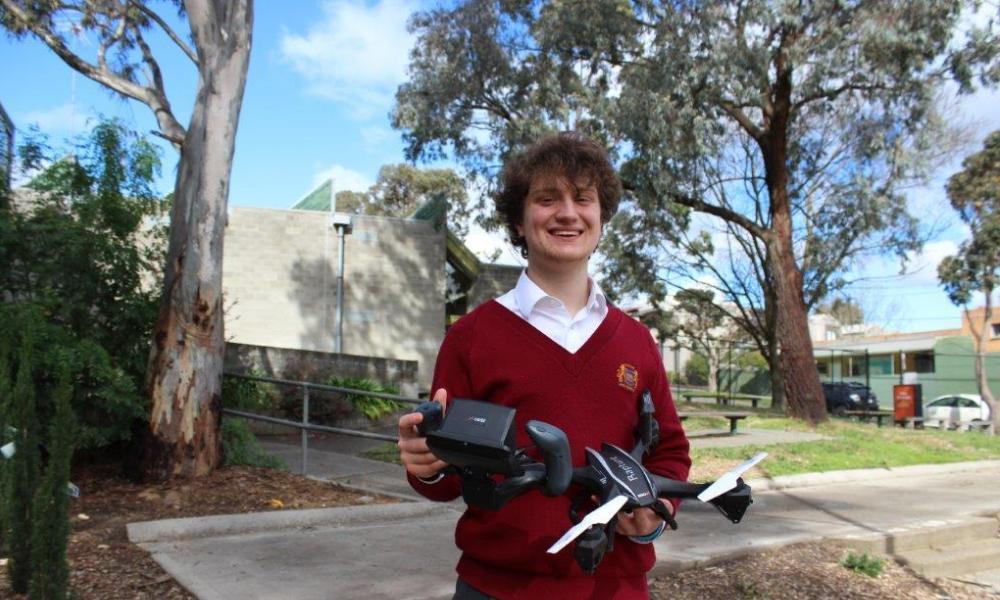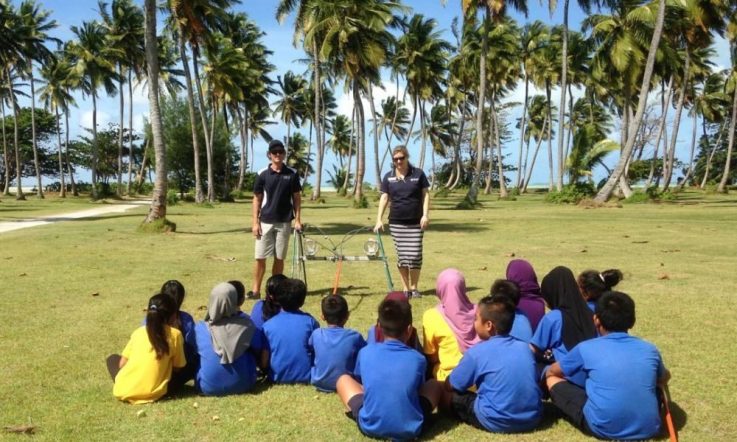How do schools ensure that the technology they purchase to use with students is being used to its educational potential? This school in Melbourne explains how instead of simply having ‘a cool bit of kit', they're using their new drone to engage students in real world science research.
The students of Macleod College have been facing a serious challenge when it comes to monitoring their school's nesting boxes – unless there is a possum tail hanging out, they can't tell what's living inside.
But after successfully applying for a National Science Week grant earlier this year, the Victorian school has been able to purchase a drone so they can now take a much closer look.
This project is in partnership with La Trobe University, which supplied the school with the nesting boxes in the first place. The project's aim is to allow the secondary school students to contribute to real world research as citizen scientists.
In fact, all the data collected is passed on to the university to assist in their attempt to study sugar glider possums in their local area.
Science and Biology teacher Belinda Moody says La Trobe University supplied the nesting boxes with the aim of boosting the habitats available for hollow dwelling species in their area.
‘There are a lot of brush tail possums and ring tail possums in the area and I suppose we're hoping that it's not just brush tail possums that might be in there and that we might have a variety of bird species using the hollows as well,' she says.
The students involved in the project include those in a Year 10 elective subject and a team of student volunteers. When they were first getting started, they borrowed a piece of equipment from the local council, which Moody describes as ‘a camera on a very long pole', in an effort to see which species were using the boxes.
‘It didn't really work, it was really difficult for the students to manage and to get a clear angle.
‘So when we saw that the theme for National Science Week was droids and drones, we thought “oh that would just be perfect”. It would allow us to get a sense of what was going on in those nest boxes that were particularly high up and inaccessible and allow the students to monitor them in a safe way.'
Since the arrival of their new drone, the school has been running lunchtime training programs to hone the students' flying skills.
‘A couple of the kids are very good at flying them and are able to get up and take some images around the nest boxes,' Moody says.
The images have also allowed the students to record which boxes are in a good state and which are not (some have been infested with bees).
‘You can't manage it if you don't know what's there so we're really keen to try. We want to make the school a good habitat for local species as well as for the students.
‘To have a drone with a purpose, it's not just about having a cool bit of kit … it's trying to get kids to use it for a real purpose as well.'
Moody says this project has allowed her students to improve their science and research skills in an authentic way. ‘I think there needs to be authentic outcomes for what they're doing or it all becomes a little bit academic.
‘As part of National Science Week we logged onto the Citizen Science Project to look at the camera traps around Australia. The students were just thrilled to be contributors to the real projects, you know, real camera traps with real images across Australia in places we could never hope to take them to in one day.
‘Anything we can do to link into real action, I think is really important.'
How could you encourage your students to contribute to a science project or research in your local area?
In what ways do you allow your students to apply what they're learning in class to real world issues?
Think about the last piece of technology your school bought. How is it being used? Is it gathering dust? Is it more than just a ‘cool piece of kit?’



